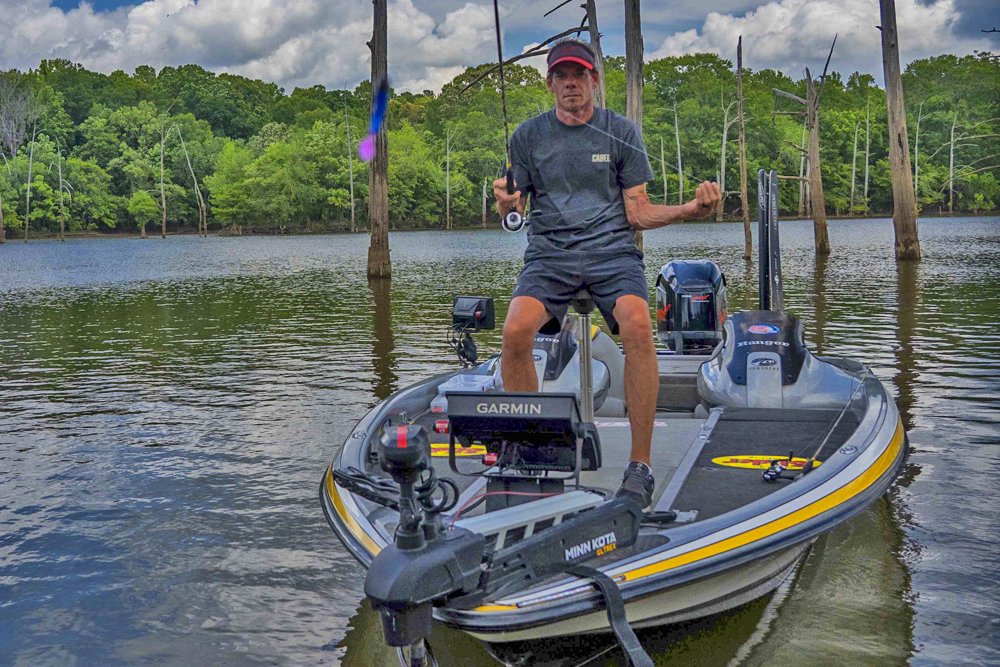Anglers using live imaging sonar are learning exactly how spooky crappie are when being approached. (Photo: Brad Wiegmann)

It’s a Fact Jack – Crappie Can’t Hear Sonar
by Brad Wiegmann
Some people believe, or at least wonder that crappie can hear the high frequency sonar sound waves. Some crappie anglers assume this because crappie seem to be spookier whenever the live imaging sonar beam marks them on the sonar unit.
Truth is, crappie have a limited ability to hear high frequencies.
Sound waves are ultra-sonic. Humans are capable of hearing sound waves from 10Hz to 20kHz. Most fish can’t hear frequencies above 500Hz to 1kHz.
The sounds that fishes hear are confined to low frequencies (often to no more than 800-1,000Hz, but this is very species dependent), according to Dr. Arthur N. Popper, University of Maryland, Department of Biology.
It’s your trolling motor making crappie spooky!
A quick overview shows that fish get substantial information from the environment around them and provides information from greater distances than their other sensory stimuli. Fish use particle motion that can be measured in terms of displacement, velocity or acceleration; in addition to sound pressure.
So, what are fish hearing?
The obvious things they are hearing are lids being opened and slamming shut, striking your lure or boat in to docks, noise baitfish make, wakes striking the side of the boat or shallow water anchors and even landing or throwing a fish back into the lake fish can hear. The list goes on, but you understand an angler in a boat being in stealth mode is even noise. I believe that the spooky behavior anglers see when the unit is in live imaging sonar is caused mostly by trolling motors props and the particle motion and sound pressure they produce.

Trolling motors props create a disturbance every revolution of the blades through the water. An angler changing direction, reversing to forward to sudden acceleration produce prop wash from a trolling motor. When props are turning, they will even force particles or large fragments in to the water column even in gin clear water or around floating vegetation. Plus, a prop can also be off-balance creating even more sound fish can hear.
Not all trolling motors are built the same. Lowrance Ghost and Garmin Force trolling motors utilize brushless motors this means less noise being produced while in use.
In nature there are numerous other sounds being produced that are louder than the undetectable pinging of your sonar unit. Even in natural environments, the level of ambient noise from natural sources can also affect the ability of fishes to detect sounds (Chapman and Hawkins, 1973).
The fact is, ice fisherman have used sonar to identify fish along with watching a fish bite their lure since they invented fish finders. If sonar sound waves spooked fish away ice fishermen using sonar would have never caught a fish.
(From Springdale, Arkansas, Brad Wiegmann is a professional photographer, videographer and outdoor writer published in dozens of print and electronic media outlets all across the nation. He is also a well-known guide, podcaster and social media influencer. Learn more about Wiegmann and his lengthy experience and expertise at BradWiegmann.com.)


